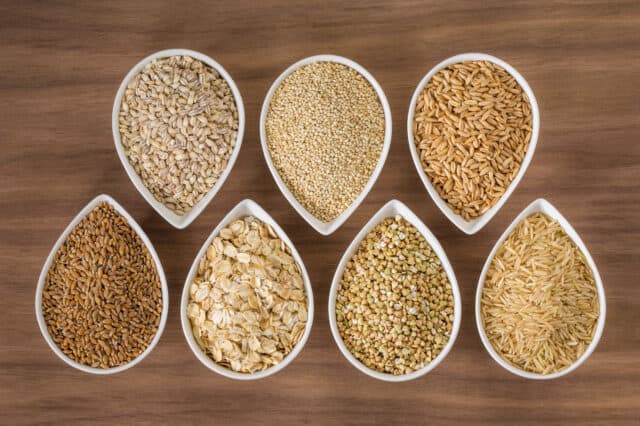Learn how to cook ancient grains such as quinoa, freekeh, barley, and bulgur wheat with this all-in-one stovetop cooking guide!

Wait, what are ancient grains, exactly?
You don’t need to think of ancient grains as anything beyond a marketing term. They do, however, encompass a number of grains that have prevailed in culinary history dating back as far as the beginning of civilization!
Unlike conventional wheat, with all its modernizations and refinements, some of the grains in this guide haven’t changed form since ancient history, and that’s pretty cool. Some of them are related to wheat, others originate from other plants, corn and rice included.
What does it all MEAN??
Either way, you’ve probably arrived here as a last-ditch effort to FINALLY clear up all the confusion about the different cookable grains out there–basically every alternative to rice.
My friend, you’ve come to the right place. Save this Ancient Grain cooking guide for a comprehensive, at-a-glance summary of all those hard-to-pronounce grains whose health benefits you can’t stop hearing about.
Farro, freekeh, quinoa, bulgur wheat, barley (pearl vs hulled), what’s the difference?? Can I treat it just like rice or is it gonna be 10pm and I’m still waiting for dinner? Also–will it even taste good? This chart covers the most conventional stovetop cooking methods, but the flavors run pretty similar across the board–nutty, slightly toasty, but overall quite neutral, like brown rice.
You’ll find most divergences in the texture–the bigger the grain, the bigger the chew factor. So you want to figure out the level of mushiness you’re going for–how much you want the grain to absorb the rest of the dish.

Armed with this guide, you can start making any Buddha Bowl you desire!
Let us know in the comments if this helped you.
Where you can use Ancient Grains
- Roasted Vegetable Buddha Bowl
- Rainbow Buddha Bowl Recipe with Tahini-Lemon Dressing
- Rotisserie Chicken Buddha Bowl
- Roasted Cauliflower Buddha Bowl
Other Ancient Grains to Consider
- Einkorn, “man’s original wheat” (whole)
- Teff – no, not the flour either
- Sorghum grain
- Blue corn
- Wild rice – so many good ones out there!
- Buckwheat groats
- Kamut® grain
More Info About Ancient Grains





sounds very doable